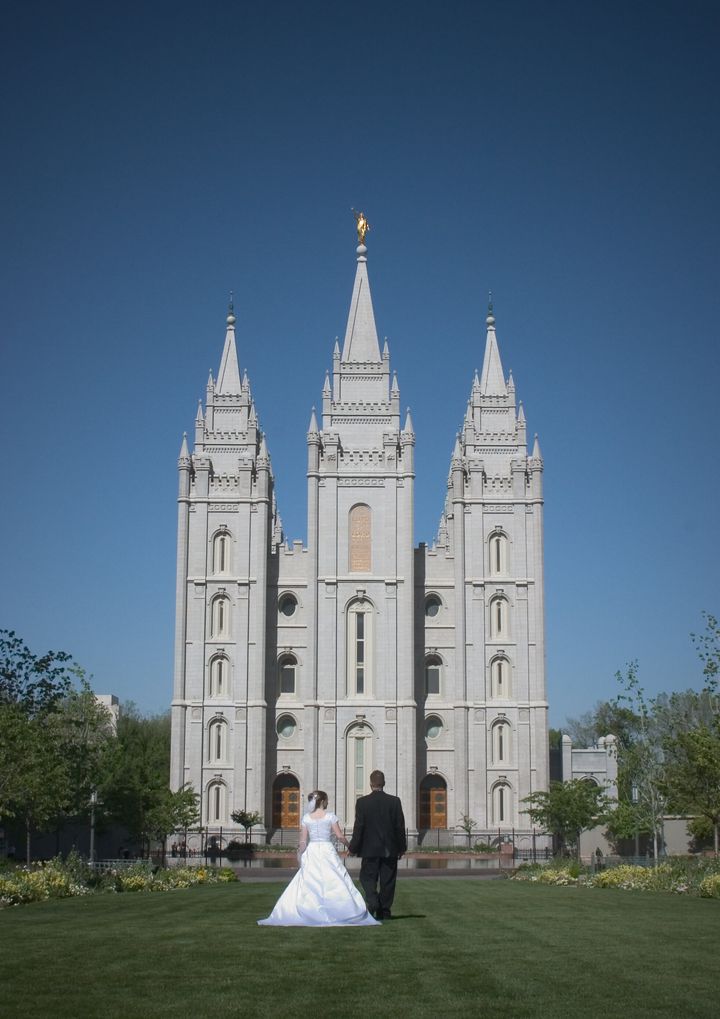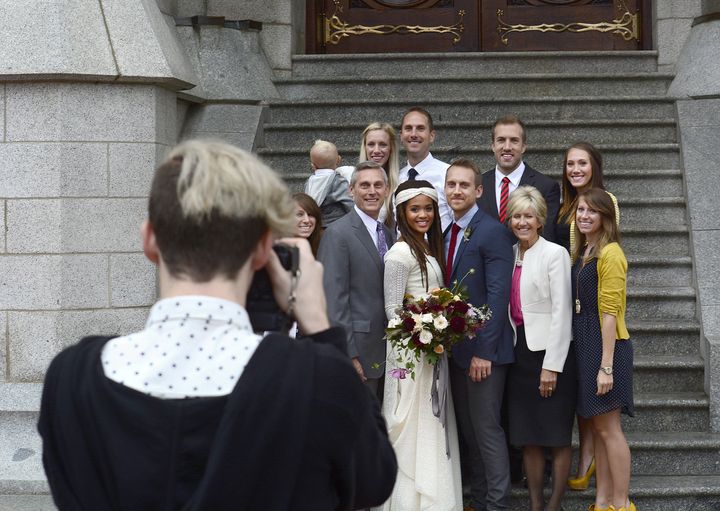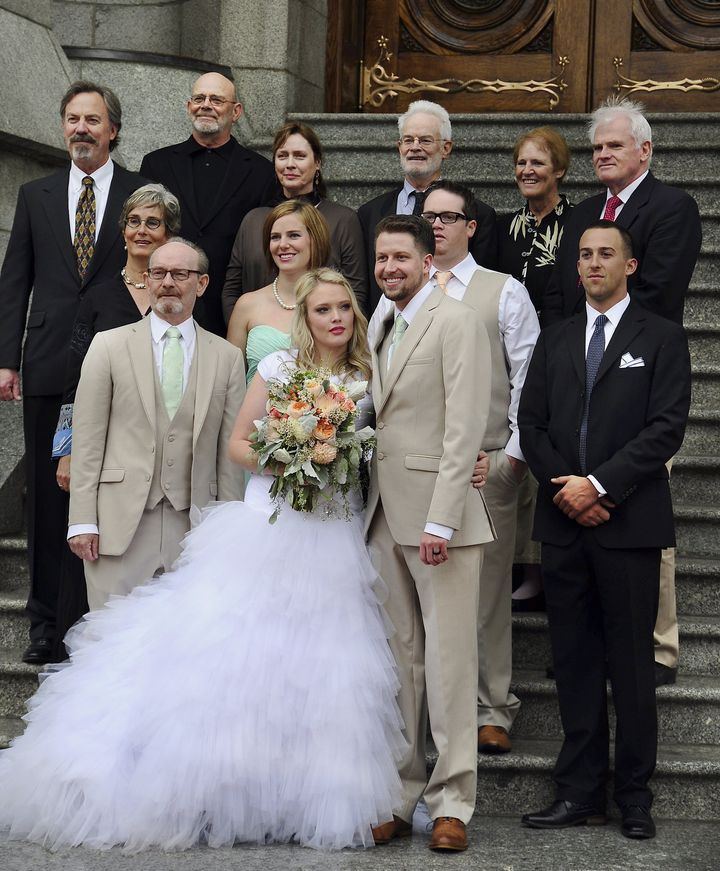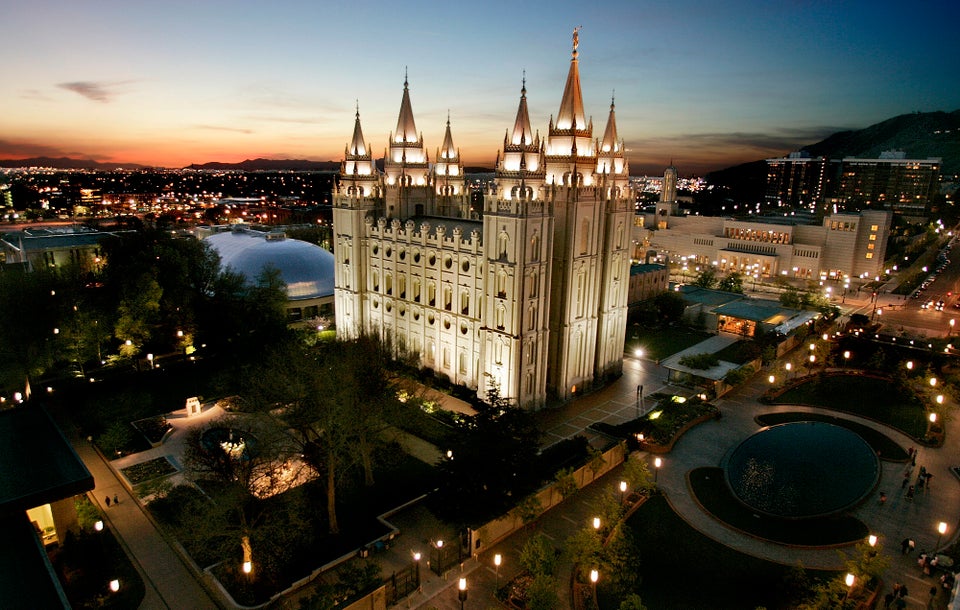The Church of Jesus Christ of Latter-day Saints, widely known as the Mormon church, is tweaking its rules about weddings to accommodate couples whose family and friends are not members of the church.
Nonmembers are still banned from attending wedding ceremonies inside a Mormon temple. However, the change would open the door for couples to hold civil ceremonies right before temple services, meaning non-Mormons can watch couples exchange vows, walk down the aisle and participate in a number of other traditional American wedding customs.
The change, announced Monday, eases strict rules that essentially excluded non-Mormons from most of the formal aspects of a couple’s wedding day and caused tension and grief for some U.S. families with mixed-religious affiliations.
“We anticipate that this change will provide more opportunities for families to come together in love and unity during the special time of marriage and sealing of a man and woman,” the church’s First Presidency, its highest governing body, wrote in a letter.

Temple wedding ceremonies are important to Latter-day Saints because their faith teaches that people who are only civilly married have no claim on each other in the afterlife. Church doctrine states that temple wedding ceremonies allow relationships to continue after death. On their wedding day, couples are “sealed” in a church temple for this life and all eternity.
To participate in ceremonies at a temple, members need to have an active “temple recommend,” a card that shows they are deemed worthy of entering the sacred space. People seeking temple recommends must be interviewed by local church leaders and demonstrate that they are abiding by key church teachings.
Since the temple ceremony is the most important part of a couple’s wedding day, it’s considered inappropriate to exchange vows after already having been married in the temple. The church advises couples to make sure that receptions that occur after weddings are “simple” and don’t resemble an actual wedding ceremony. According to the church’s Handbook, that means no extravagant decorations or wedding marches down the aisle. Photos are also not permitted inside temples.
Due to all of these restrictions, full-blown civil weddings ceremonies need to take place before a temple sealing.
However, to encourage members to center their wedding festivities around temples, the church also had a policy dictating that members in the U.S. needed to wait a full year between a civil wedding and a temple sealing, making it impossible to have two formal ceremonies on the same day. As a result, many U.S. couples in the church decided to forego a civil wedding ceremony altogether.

The church’s rules created issues for converts in the U.S. whose family and friends are not part of the church, made more complicated by the one-year waiting requirement.
Fiona Givens, a convert, told the Salt Lake Tribune that her mother was “overcome with grief” upon learning she couldn’t attend Givens’ wedding ceremony.
“I was her only daughter and she had spent years anticipating the festive occasion, having even picked out the church in which I was to be married,” Givens said.
Aubri Alvarez, another convert, told The Associated Press that she was sealed in the Albuquerque temple ― while her evangelical Christian mother cried outside.
“My parents also love God and are very nice people and they couldn’t see their daughter get married,” Alvarez said. “You really had to choose between the church and your family.”

The old rules even caused conflict within predominantly Latter-day Saint families if a relative was unable to get a temple recommend and was therefore left out of the ceremony. Scholars estimate that less than half of Latter-day Saints have temple recommends.
Additionally, the church’s one-year waiting policy in the U.S. wasn’t in effect everywhere. Since some nations have not licensed the church to perform weddings, Latter-day Saints in those countries are required by law to get a civil marriage before having a temple ceremony. In those countries, Latter-day Saints have already been able to have two formal ceremonies on the same day.
Now U.S. members will be able to do the same. “The new policy sets a single global standard for Latter-day Saints around the world,” the church said in a statement.
The First Presidency emphasized that the change should not be interpreted as “lessening the emphasis” on temple sealings. It encouraged church leaders to help couples keep the sealing as the “central focus” of the wedding day.
As of this week, non-Mormons will still have to wait outside temples while their loved ones’ religious ceremonies take place inside. Still, the tweaked rules mean that these non-Mormon relatives and friends would still be able to attend the couple’s civil ceremony earlier in the day.
Writer and religion scholar Jana Riess said that the old policy created “heartbreaking situations” for many church members.
“Now, hopefully, stories of exclusion from what should be a joyous event will be a thing of the past,” Riess wrote for Religion News Service.

